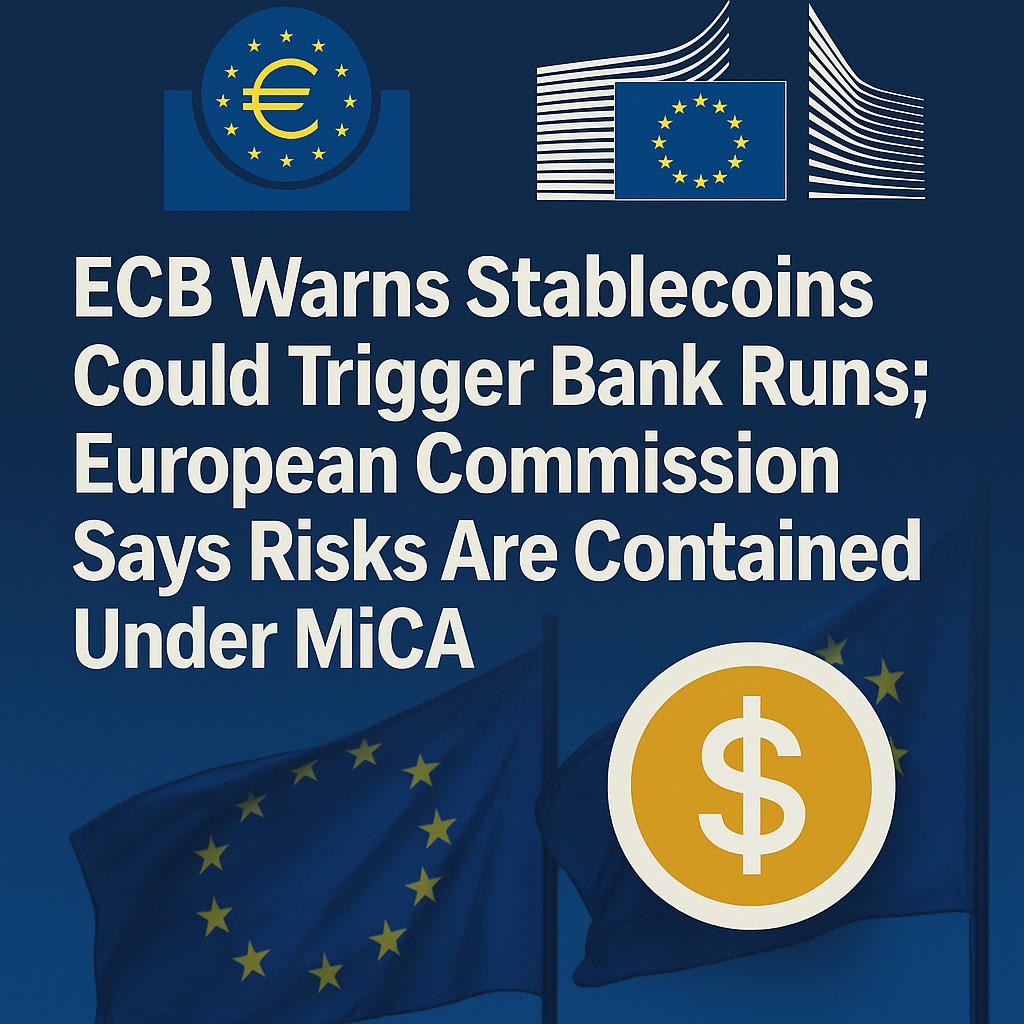ECB Warns Cross-Border Stablecoin Issuance Could Undermine EU Oversight
In a document published on April 10, the ECB highlighted key risks associated with stablecoins issued jointly by entities inside and outside the EU (multi-jurisdiction issuance), including:
- Financial Stability Threats: Insufficient reserves held by issuers operating in the EU could lead to large-scale redemptions and liquidity crises.
- Regulatory Arbitrage: Issuers outside the EU might falsely claim “EU compliance,” undermining MiCA’s oversight.
- Legal Ambiguity: Supervisors could struggle to enforce accountability across jurisdictions, raising the risk of cross-border liabilities.
The ECB warned that these dynamics could erode consumer protections and jeopardize regional financial stability.
For example, consider an issuer offering two versions of the same stablecoin: “US Coin” in the U.S. and “EU Coin” in Europe. Under MiCA, EU Coin must maintain 1:1 reserves, provide free redemptions, and keep at least 30% of reserves in European banks. A surge of redemptions in the U.S. could still pressure EU Coin’s liquidity, creating systemic risks in Europe. To address this, MiCA imposes circulation limits on stablecoins.
European Commission Response: Redemption Risks Are Unlikely
Contrary to the ECB’s alarm, the European Commission took a more relaxed stance, stating in its June statement:
“Even if a redemption event occurs, it will primarily affect non-EU countries like the U.S., as most tokens are circulated and backed outside Europe.”
The Commission emphasized that MiCA has built-in thresholds to keep foreign stablecoins from gaining significant traction in the eurozone, reducing the risk of destabilizing bank runs.
MiCA’s Real-World Impact: Foreign Stablecoins Already Deterred
The European Commission also published a research paper showing MiCA’s tangible effects:
- Major stablecoin issuers, such as Tether (USDT), have avoided registering in Europe because MiCA requires keeping at least 60% of reserves in European banks—something they’re unwilling to do.
- This de facto restriction has discouraged large-scale foreign stablecoin adoption in the eurozone, achieving MiCA’s goal of safeguarding EU financial sovereignty.
However, the ECB and European Commission remain divided. ECB President Christine Lagarde reiterated on June 24 that cross-border stablecoin flows could threaten monetary policy and financial stability, calling for comprehensive regulation.
Some observers argue the ECB may be overstating stablecoin risks to bolster support for its own digital euro project, which itself faces internal disagreements over its design and implications. Meanwhile, the European Commission advocates a more flexible approach, suggesting Europe should embrace stablecoin innovation rather than react solely to ECB warnings.
Risk Disclaimer: Cryptocurrency investments involve significant risks, including the potential loss of your entire capital. Please assess your risk tolerance carefully.

![[News] Bitcoin at a Turning Point? 10x Research Signals a Bullish Macro Shift Ahead](https://cryptoexplores.com/wp-content/uploads/2025/06/new20250616.jpg)
![[News] Binance Lists $HOME, the Gas-Free, Bridge-Free All-in-One DeFi App](https://cryptoexplores.com/wp-content/uploads/2025/06/news20250617.jpg)